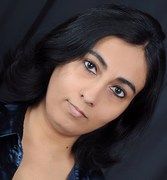You have been experiencing fatigue, anxiety and general stress symptoms such as disturbed sleep patterns or loss of appetite after months of hard work trying to balance the work-life equation. Concerned you see a doctor who may suggest some vitamins and relaxation massages for a month before you report back to her/him later. You look up a reputed licensed massage therapist and set up an appointment for a few relaxation massage sessions. As the day approaches, you begin to turn apprehensive and do not know what to expect at the session.
Here’s a preview of what procedures are followed for a relaxation massage:
If the whole body needs massage, the sequence is always the same. The masseurs start with your back and move on to the back of the legs. Then they have the patient turned over on her/his back and continue with the massage of the neck, shoulders, scalp, face, arms and hands, front of the body and front of the legs.
It is important to note that massage of most areas explained below follows the pattern of - effleurage or light gliding strokes (light gliding strokes, circling and feathering), following it up with medium depth strokes (Kneading, pulling and wringing) and depending on the area deep tissue massage (finger friction, thumb pressing and deep pressure with the heal of the hand), percussion strokes (as mentioned in the question above) and ending with large light gliding strokes connecting the whole area.
BACK:
1. The therapist always starts by covering the whole area with a clean sheet or towel after you have adjusted on the firm but comfortable massage table.
2. Soothing oil of your choice is applied for the massage.
3. The therapist starts with the whole back and then moves on to the shoulder blades.
4. Next, the upper back is followed by the lower back massage.
5. The buttocks are massaged next and only if you are comfortable with the therapist doing so. They will ask you before they work on the area.
6. Next, they take up the sides of the body and end the back massage with working mildly and carefully on the spine.
BACK OF THE LEGS:
1. Both the legs are oiled together.
2. The therapist will work up the legs with deeper movements and knead as they go down towards the foot.
3. Then they massage the foot before they move on to the next leg.
SHOULDERS, NECK AND SCALP:
1. With the shoulder the therapist will always begin with the front and then do the back areas of the shoulder.
2. For the neck, they may turn the client’s head to one side and work on the opposite side.
3. Then they turn the head on to the other side and work on it’s opposite side.
4. Scalp- the masseur will massage the scalp gently.
FACE:
1. Massage begins with the forehead, moving down to the chin.
2. For the face, massage ends with working outward from the chin to the side of the face.
ARMS AND HANDS:
1. Arms and hands are massaged one at a time. A similar procedure is followed for the legs
2. The therapist will work up towards the top of the limb and then knead their way down to the palms.
3. Arm and hand massage ends by massaging the wrists of the client
FRONT OF THE BODY:
1. Massage is done with movements over the ribcage and then to the sides of the body
2. This is followed by employing circular movements around the abdomen.
3. To end the front-body massage, the therapist will work from the belly up towards the neck in long sweeping strokes.
FRONT OF THE LEGS:
1. Here the therapist will apply oil to both the legs together before they start the massage.
2. However, the massage will be done one leg at a time.
3. They work up to drain the legs of toxins using wringing motion and then sliding motion.
4. Then they will follow it up with the circling of the knee cap on the way up, and kneading their way down towards the foot.
5. The front of the leg massage ends by massaging the front area of the foot.
Lastly to link all the parts of the body that have been addressed with the massage, the therapist may use long connecting strokes on the front side of the body or rest their hands on two different parts of the body they wish to connect. They always take care not to go too close to the genitals during the giving of the massage as it may make the client uncomfortable.
*Benefits, side-effects, prior preparations, costs, duration of procedure, recovery and resumption of daily activities as well as support issues should be discussed with your therapist for each type of treatment option before starting on your treatment.
Mamta Singh is a published author of the books Migraines for the Informed Woman (Publisher: Rupa & Co.), the upcoming Mentor Your Mind (Publisher: Sterling Publishers) and An Urban Woman's Integrated Fitness Guide (Publishers: Hay House). She is also a seasoned business, creative and academic writer. She is a certified fitness instructor, personal trainer & sports nutritionist through IFA, Florida USA. Mamta is an NCFE-certified Holistic Health Therapist SAC Dip U.K. She is the lead writer and holds Expert Author status in many well-received health, fitness and nutrition sites. She runs her own popular blogs on migraines in women and holistic health. Mamta holds a double Master's Degree in Commerce and Business. She is a registered practitioner with the UN recognised Art of Living Foundation. Link: http://www.migrainingjenny.wordpress.com. Visit www.mamtasingh.com





Add a CommentComments
There are no comments yet. Be the first one and get the conversation started!